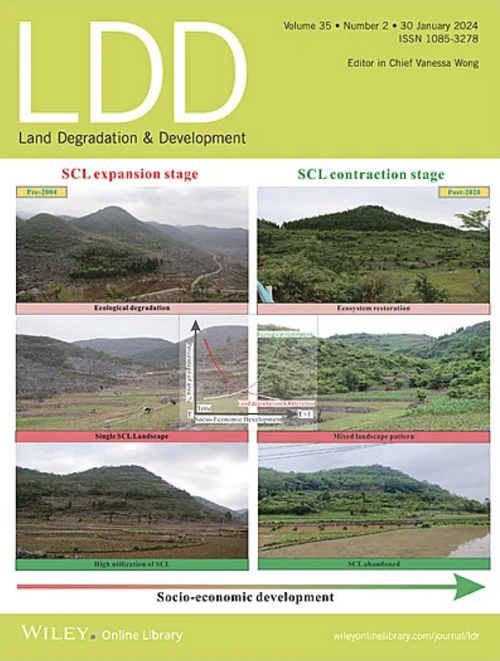Karst Tiankeng Is the Refuge of Microbial Diversity in the Degraded Karst Landscape
IF 3.6
2区 农林科学
Q2 ENVIRONMENTAL SCIENCES
引用次数: 0
Abstract
Known as the largest negative terrain on the earth's surface, the karst tiankeng is isolated by vertical cliffs and maintains a unique ecosystem within it. However, knowledge of the microbial ecology of karst tiankengs does not match their importance. To this end, we conducted extensive sampling across 16 karst tiankengs and 2 sites and used high-throughput sequencing methods to analyze soil bacteria and fungi. This study found abundant and diversified microbial communities in karst tiankengs, with Proteobacteria, Acidobacteriota (Bacteria), and Ascomycota, Basidiomycota (Fungi) being the main phyla. Compared to the degraded karst landscape, karst tiankengs maintained a higher richness of bacterial taxa. The common and exclusively microbial taxa in karst tiankengs follow copiotrophic and opportunistic strategies, and these taxa are associated with high soil nutrients (TN and SOM) and water content. Karst tiankeng maintained a stable microbial network structure through cooperation, and the dispersal limitation dominated the bacterial and fungal community assembly. Our results enhance the understanding of microbiomes in subterranean karst ecosystems, highlighting that karst tiankengs are important refuges for microbial diversity in degraded karst landscapes.求助全文
约1分钟内获得全文
求助全文
来源期刊

Land Degradation & Development
农林科学-环境科学
CiteScore
7.70
自引率
8.50%
发文量
379
审稿时长
5.5 months
期刊介绍:
Land Degradation & Development is an international journal which seeks to promote rational study of the recognition, monitoring, control and rehabilitation of degradation in terrestrial environments. The journal focuses on:
- what land degradation is;
- what causes land degradation;
- the impacts of land degradation
- the scale of land degradation;
- the history, current status or future trends of land degradation;
- avoidance, mitigation and control of land degradation;
- remedial actions to rehabilitate or restore degraded land;
- sustainable land management.
 求助内容:
求助内容: 应助结果提醒方式:
应助结果提醒方式:


